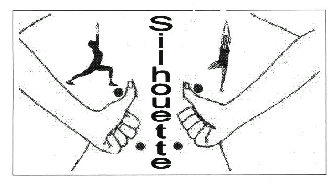

YOGA FOR EVERY DAY
![]()
![]()
![]()
![]()
![]()
THE
EIGHT STEPS OF YOGA
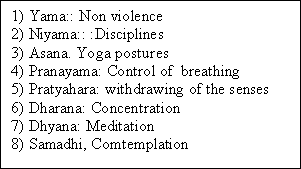
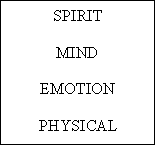
-development of conscienceness, !
-development of prana, life force !
-flexibility of the body
!
for well being, health, creativity, spiritual
development.
-relaxation
1
MATERIAL/SPIRITUAL
BEINGS
-
Constitution of Man
- Yama: Non-violence (ahimsa), truth (satya), abstention from stealing (asteya), continence (bramacharya), and absence of greed for possessions beyond one’s need (aparigraha)
-Niyama: Cleanliness (saucha), contentment (santosha), religious zeal (tapas), self-study and surrender of the self to the supreme Self or God
-
Flow of life force, of prana ( Nadi, chakra,
marma)
-
Asana and chakra
-
Asana and breathing
- Asana and sensation ( dynamic and static)
-
Yoga self massage
-
Asana for relaxation, stretching, flexibility,
strength, energy. meditation
-
Classical asana: : Tadasana, Paschimottanasana
(pince), cobra, warrior, triangle, candle,
plough, frog, mountain, cat , savasana etc...
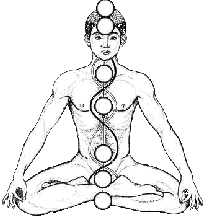
PRANAYAMA –
Control of the breathing , of life force, of prana
-4 phases breathing
-abdominal , costal, thoracic, clavicular breathing
-complete breathing
-Ujjayi
-altered breathing : extended inspiration or exhalation, alternated
breathing, Kapalabhati , fragmented breathing, shitali, etc...
MEDITATION
-Concentration
-Meditation
-Comtemplation
TECHNICAL SUPPORTS
Bandhas (locks) Mulabandha (perineum), uddiyana bandha,(abdomen) ,
Jalandharabandha (throat)
Kechari : tongue
Mudra
Mantra, Mandala,
Affirmation
Support : belts, cushion, wall, bricks, etc..
Color, Visualisation, gems
YOGA FOR WHOLE BODY
1)
sun salutation
3)
Breathing dance
4)
Free dance
5)
Sequence for flexibility of the column and mind purification
![]()
![]()
![]()
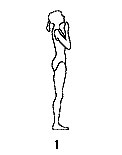
YOGA FOR SPECIFIC
OBJECTIVES
1)
Different parts of the body
2)
Different constitutions: Vata-Pitta –Kapha, age, atletic,
3)
Different common illnesses
4) Therapeutic yoga
5) Yoga and pregnancy
6) Yoga for musicians
YOGA FOR
ANY MOMENT OF OUR DAILY LIFE
Exple: Waking up, teeth
washing, hair brushing, in the kitchen, at
the table, siiting in the office, while phoning,
picking up things, watching television, at the red light, , in the car,
bus, plane etc.
![]()
![]()
![]()
![]()
![]()
PROCESS
FOR SELF-ENQUIRY – SELF DIAGNOSIS – PRACTICE
The different steps are
1-Awareness – sensitisation
2-Analysis
3-diagnosis
4-goals and priorities
5-identification
of tools : Asana, pranayama, bandha,
meditation
location, periodicity,
regularity, etc.
6-Life plan and sequences
-daily rhythm
-weekly routine
-monthly cycle
7-autoinduction to
reprogram automatic pattern
8-Practices
9-auto evaluation
10- adjustment
![]()
![]()
![]()
![]()
![]()
SELECTION
/ BUILDING OF SEQUENCES –
art of balance
-objective
-Main posture
-postures for the preparation of the main one.:
-structural analysis of the main posture
-critical point (s)
- selection of secondary postures
-opening
– closing
-transition
postures
-balanced sequence:
-front and back,
-balance
of left and right side
-torsion
-introduction of locks
-breathing
-duration
of the posture
![]()
![]()
![]()
![]()
![]()
Return to Top
Return to Home Silhouette